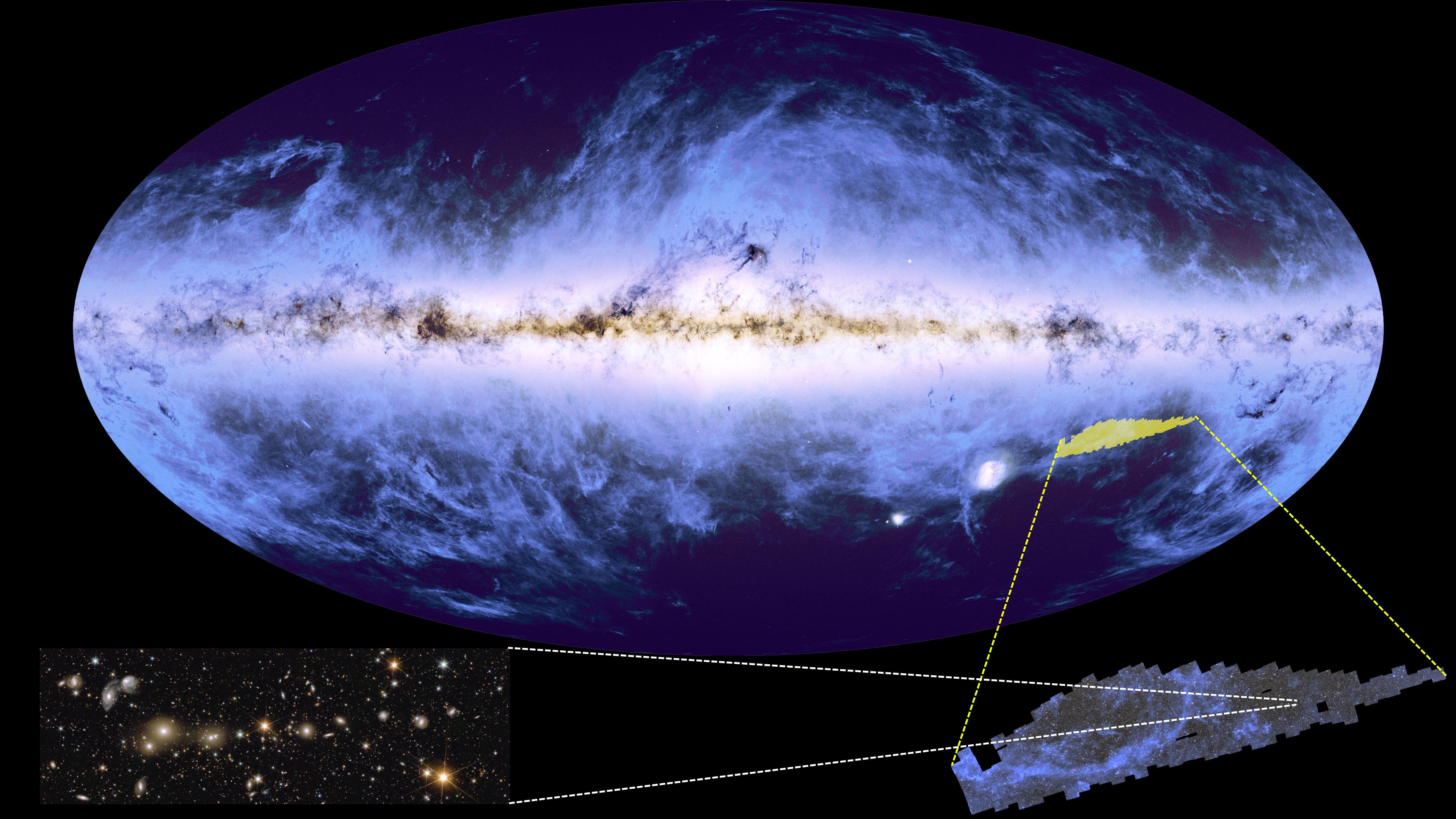The Most Amazing Hubble Image Ever
Remember the “Pillars of Creation,” the star-forming nursery in the heart of the Eagle Nebula? You’ve never seen it like this.
“The whole difference between construction and creation is exactly this: that a thing constructed can only be loved after it is constructed; but a thing created is loved before it exists.” -Charles Dickens
So you might know all about the Eagle Nebula, one of the first star-forming regions ever seen from Earth.
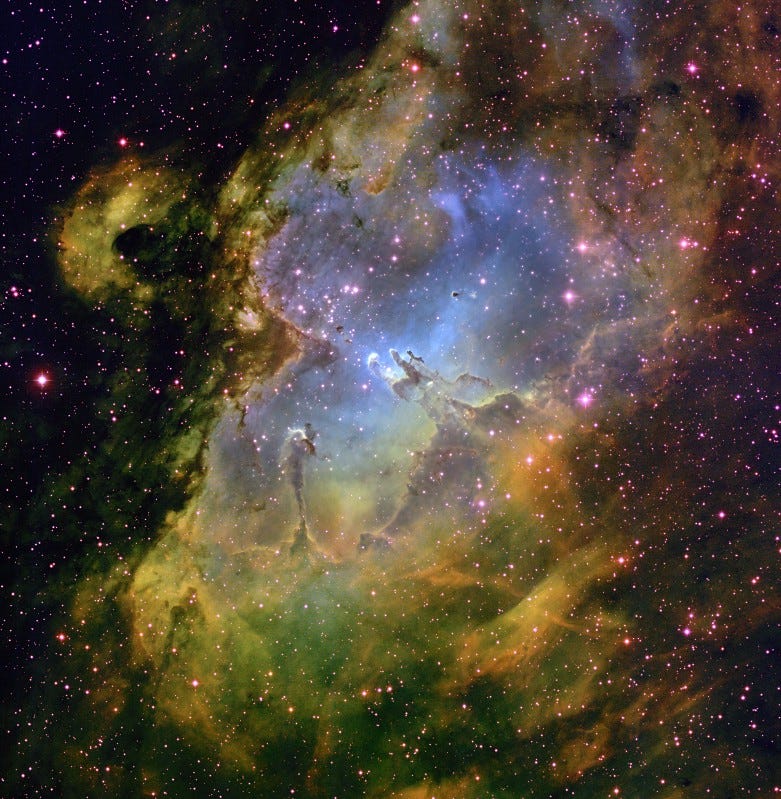
A great image — like the NOAO one, above — will show you pillars of dust in the center: these are star-forming regions, where new stars are growing and being formed, while simultaneously being evaporated, both from the hot ultraviolet radiation from the outside as well as the newborn stars growing on the inside.
And a close-up view, courtesy of Hubble from 1995, was one of the greatest and most iconic images ever taken.
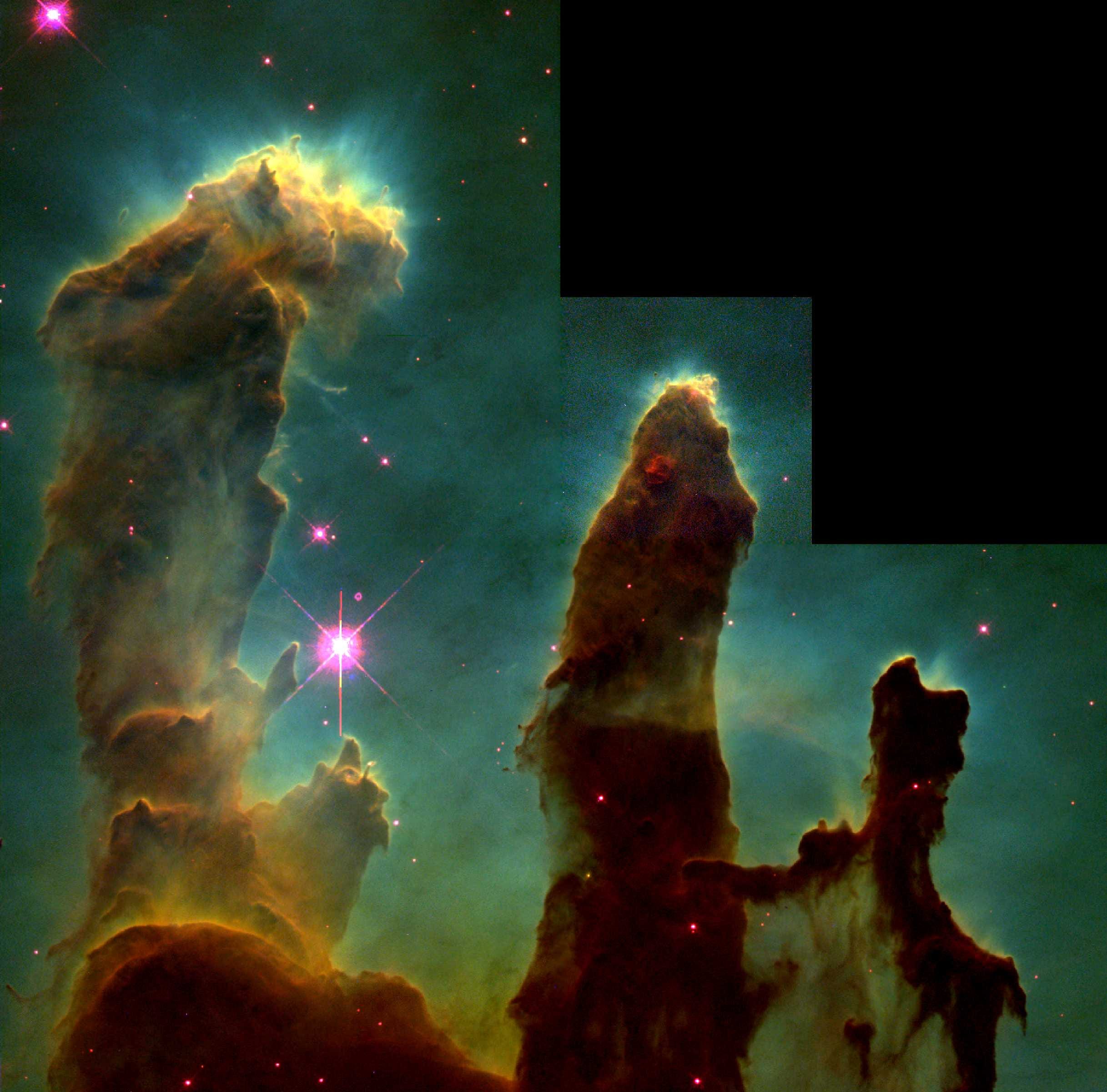
Well, there’s a new, higher-resolution, more gorgeous image in town. Want to see?
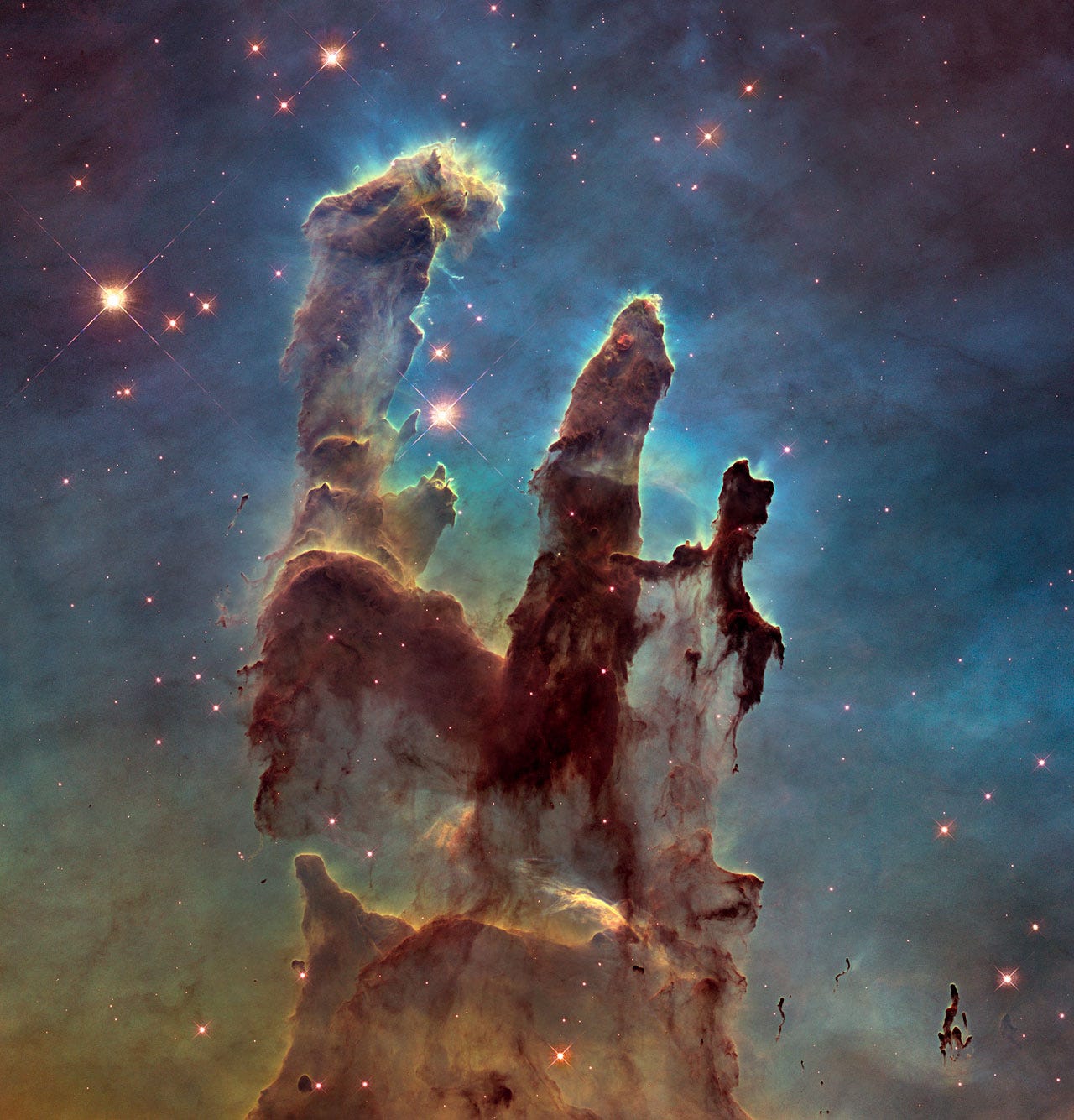
You’ll notice a few things right away:
- This new image is huge, showing a much larger region of space than the previous one.
- There is better contrast and superior views.
- Instead of just the creation, this image also highlights the destruction inherent in the region, as the dissociation of the gaseous globules is easily apparent.
- And there are far more wavelengths of light that went into this image, including ultraviolet and multiple individual element signatures. Hydrogen (in green), oxygen (in blue) and sulphur (in red) glow brightly.
To give you an idea of how a full-resolution version of this image appears, take a gander at the left-most pillar in all its glory:

As well as the left-most two! These pillars are about 5 light-years long apiece.
And for those of you wondering, the resolution here is about double the original from 20 years ago; the advances are exclusively due to advances in instrumentation alone!

There are features that have moved in 20 years as well: jets have shifted and extended, telling us about how stars collapse and how they shock their way through the gas, how high-velocity stars and gas are moving, and will allow us to test our best theories of star formation with the greatest data ever obtained.
And that’s not just all: there’s a bonus! 20 years since the first Hubble image of the Eagle Nebula came back, they also used it to take an infrared mosaic of this same region.
The infrared is awesome, because it’s mostly transparent to the light-blocking dust that clouds the visible!
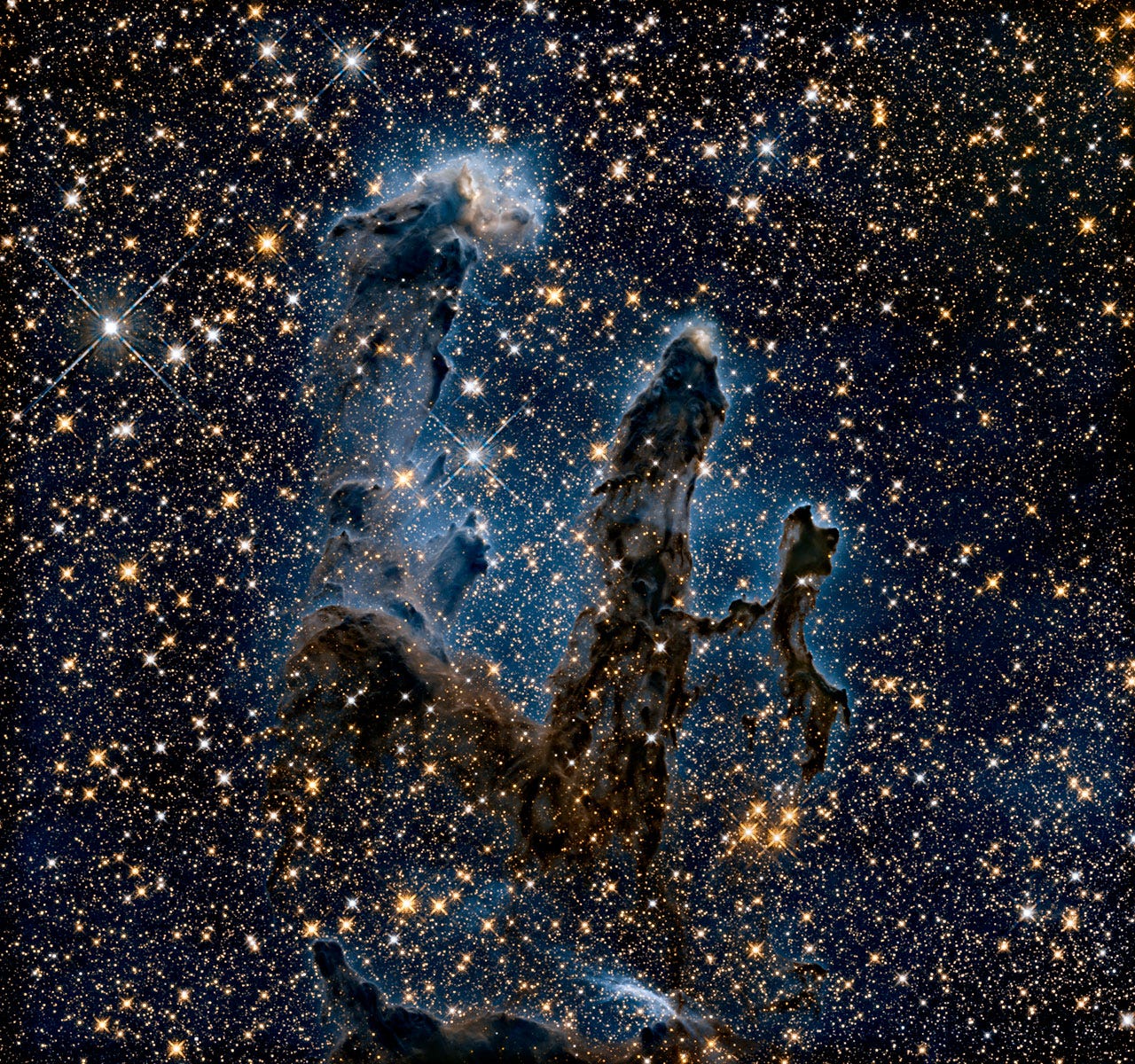
The resolution is slightly lower because the wavelength of infrared light is longer, and so fewer wavelengths fit across the 2.4 meter diameter of Hubble’s primary mirror. The constraint on how thin the edge of these regions are — from thousands of light-years away — is just 100 AU, or about 25% larger than the diameter of Pluto’s orbit around the Sun.
At full resolution, the infrared image is still out-of-this world! (More images here.)
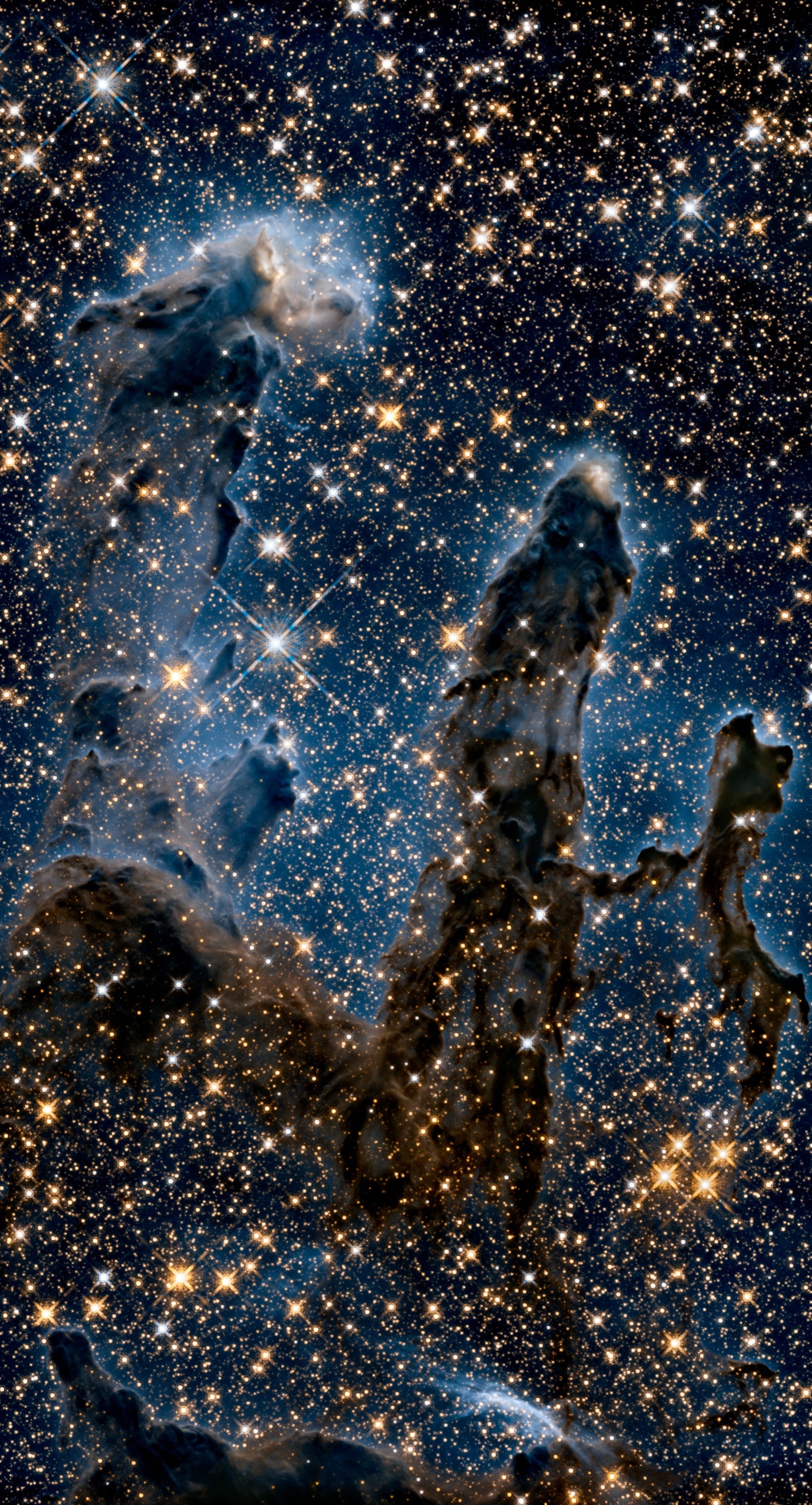
I… have no words to express how magnificent this is.
This is your Universe. This is where stars like our Sun formed. This is where planets and life have their origin.
This is the story of you. Enjoy.
Leave your comments at the Starts With A Bang forum on Scienceblogs!




